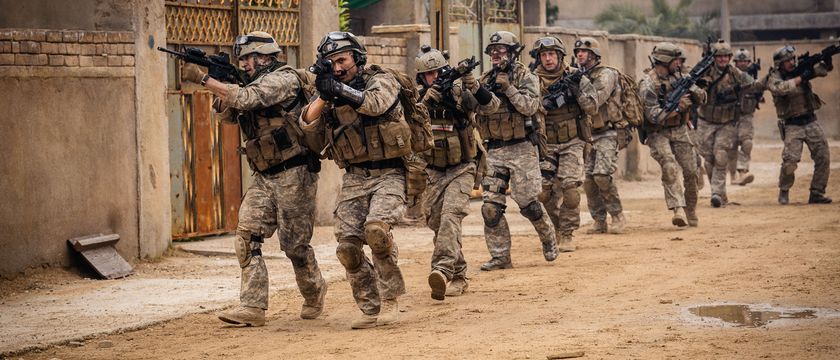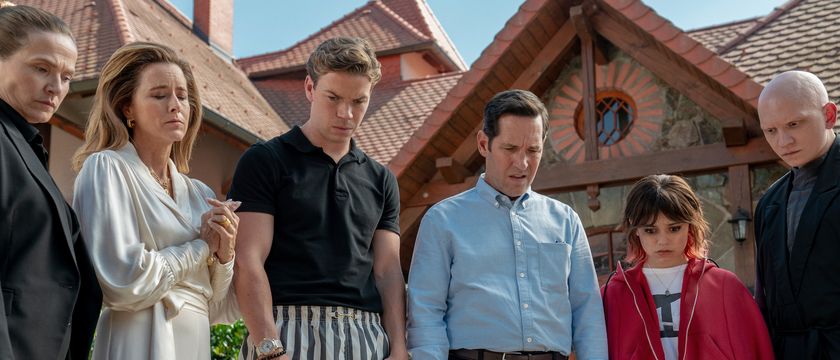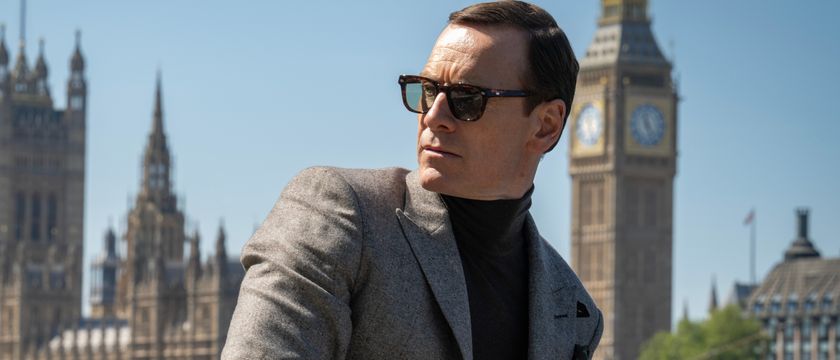In modern franchise filmmaking, origin stories play a key role. In essence, they are meant to be a launching pad – adding greater depth and history to particular characters in the aim of expanding fan bases and building potential for the future. In this regard, Robert Schwentke’s Snake Eyes: G.I. Joe Origins is technically successful… though in ways unexpected and surprising. Why? Because while the title of the new film suggests that Henry Golding’s central protagonist is the main event, co-star Andrew Koji winds up pulling off one of the more impressive spotlight-stealing performances in recent memory as Tommy, the friend of Snake Eyes’ whom fans know eventually becomes the villainous Cobra agent known as Storm Shadow.
This inherently isn’t a bad thing, as there’s nothing generally wrong with a supporting player outshining a lead – but the circumstance does encapsulate what is ultimately the biggest issue with the movie: a lack of focus. As it weaves the story of how Snake Eyes goes from being an orphan to an elite member of the counterterrorist G.I. Joes, the film throws a lot of plot at the audience, and while it has a number of solid stretches, it also regularly feels jumbled and not entirely confident in itself (which is a criticism that applies to both the narrative and the action aesthetic).
Scripted by Evan Spiliotopoulos, Joe Shrapnel, and Anna Waterhouse, Snake Eyes: G.I. Joe Origins begins with the titular character’s tragic backstory – watching his father get murdered by a group of mysterious mercenaries as a child – and catches up with him as an adult who lives as a drifter going city-to-city winning money in underground fighting competitions. He is directionless beyond his desire to get revenge against the men who killed his dad, and this makes him an easy seduction target for Yakuza boss Kenta (Takehiro Hira), who offers Snake Eyes information about the mercenary leader in exchange for the talented fighter to come work for his organization.
Weeks later he is working in the Port Of Los Angeles cutting open fish so that they can be used to discretely ship weapons – but operations stop when Kenta arrives and tells Snake Eyes that he must kill one of his co-workers, the aforementioned Tommy, who is a spy from an enemy clan. He opts to save Tommy’s life instead, and, after fighting their way through Kenta’s men, they escape to Tokyo.
Snake Eyes learns that Kenta is Tommy’s cousin, and, like him, was next in line to be the leader of the Arashikage Clan, but he was banished after he attempted to murder Tommy. Welcoming his new friend into his home, Tommy vouches for Snake Eyes to his grandmother (Eri Ishida) and the Arashikage head of security, Akiko (Haruka Abe), and wants him to become a part of his clan – a process that requires passing three trials.
What Tommy doesn’t know, however, is that Snake Eyes has never stopped working for Kenta, and secretly has his own motivations inside the walls of the Arashikage compound.
Snake Eyes juggles a lot of balls in its plot, and it can’t keep them all in the air at all times.
Between Snake Eyes’ duplicity and desire for revenge, the initiation into the Arashikage, and Kenta’s secret plan, not to mention all of the interpersonal conflicts, and more direct G.I. Joe vs. Cobra action with Scarlett (Samara Weaving) and The Baroness (Úrsula Corberó), Snake Eyes: G.I. Joe Origins has a hell of a lot going on, and it doesn’t always succeed in keeping things flowing. As the various plot elements overlap, it’s weirdly easy to forget about certain elements of the story, and then be surprised when they return. There’s such a big gap between Scarlett’s first and second scenes that you wonder if the character has just disappeared altogether, and the movie never finds elegant ways to go back to the tests that Snake Eyes must pass to get into the clan.
Henry Golding is good in Snake Eyes, but Andrew Koji is great.
What’s really baffling, though, is the way in which the film establishes its characters (and I should note at this point that I’m not particularly well-versed in the canon of the G.I. Joe franchise). Henry Golding’s Snake Eyes is certainly the protagonist, but he is most definitely not a hero; in fact, he operates like a villain through most of the runtime –portrayed as a revenge-blinded backstabber who is willing to betray a mindful, peace-seeking group that takes him in as family. This in mind, it really isn’t all that surprising that Andrew Koji is able to swoop in and steal the movie away from him, as Tommy represents the values that one expects from the lead in a superhero blockbuster (not to mention his terrific charisma and talented physicality).
The story does wind up changing the ways in which I look at the characters, and under different circumstances I might call this approach impressive in its attempt to subvert the typical, but all of it comes across as too messy to wholeheartedly celebrate.
Lots of hand-held cinematography prevents the action in Snake Eyes from ever popping.
“Messy” is a good adjective to also carry over into the conversation about the action in Snake Eyes: G.I. Joe Origins. This is a franchise title that, thanks to its premise and ensemble, has the opportunity to feature some of the best fight sequences modern Hollywood has to offer outside of the John Wick films, but it’s an opportunity squandered. Robert Schwentke demonstrates a real love for the use of hand-held shooting in scenes of both sword and gun play, and that’s understandable logically (it’s cinematography that lets the audience feel like they are getting a first person perspective), but it’s mostly a failure practically.
The film features a number of intense chases and showdowns – on highways and rooftops and in alleyways and snake pits – but it’s constantly hard to get a beat on what’s happening because the camera is constantly moving around. It’s frustrating because there’s a lot of stuff you’d love to get a clear look at, such as the brilliantly skilled Iko Uwais as one of the Masters of the Arashikage clan single-handedly taking on a collection of ninjas, but you can’t because the cinematography doesn’t allow it.
Seeing the situation from the director’s point of view, Snake Eyes: G.I. Joe Origins is a PG-13 movie, meaning that it needs to feature bloodless swordfights, and that fact may have forced Schwentke’s hand as far as showcasing violence. That’s only an excuse, however, and doesn’t make up for how vexing the action can be overall.
It’s surprisingly been eight years since the last G.I. Joe blockbuster, with Jon Chu’s G.I. Joe: Retaliation released back in early 2013, but time hasn’t done much to improve things as far as quality is concerned. There is enough to appreciate in Snake Eyes to call it a mediocre movie, but it’s tough because there exists so much potential in it to be better than it is. At the very least it could have been retitled Storm Shadow: Cobra Origins to give due respect to the true star of the show.

Eric Eisenberg is the Assistant Managing Editor at CinemaBlend. After graduating Boston University and earning a bachelor’s degree in journalism, he took a part-time job as a staff writer for CinemaBlend, and after six months was offered the opportunity to move to Los Angeles and take on a newly created West Coast Editor position. Over a decade later, he's continuing to advance his interests and expertise. In addition to conducting filmmaker interviews and contributing to the news and feature content of the site, Eric also oversees the Movie Reviews section, writes the the weekend box office report (published Sundays), and is the site's resident Stephen King expert. He has two King-related columns.

CBS' Watson Got Rid Of One Of The Strongest Ties To Sherlock Holmes, But There's Still Hope For The Storyline To Continue

‘I Caught Jenna Just Spacing Out And Petting It’: Jenna Ortega And The Death Of A Unicorn Cast Had A Delightful Time With The Fantasy Creatures On Set

32 Movies About The Corporate World That Make Us Want To Quit Our Jobs










